To be realistic, many people are guilty of this one offense: ignorance. We frequently ignore the importance of taking good care of our backs. However, whether or not we like it, the importance of the back cannot be overstated. You still don’t get it? Well, you see, the primary structural support for your trunk comes from your back muscles (torso). These muscles ultimately allow you to move your neck, head, arms, shoulders, and legs as well as the rest of your body. Furthermore, your back contains your spinal cord which connects your head, brain, and other parts of the body. You can bend over, twist, swivel your head, and stretch your back thanks to the coordinated action of your back muscles. In other words, our backs play a major supportive role in our existence.
Sadly, our backs could rebel at times and let us know that they also need to be loved and cared for. But then, the suffering is just momentary for many of us. Others, however, may find it to be far more annoying and incapacitating. If your back pain is moderate to mild, yoga could be beneficial by strengthening your back, stretching it, and enhancing blood flow to your spine and nerves. However, if your back pain is severe (due to one medical condition or the other), medical treatment may be required. Regular yoga practice can help you strengthen your lower spine. For a free way to establish a habit and loosen up your back, you can key into Yoga classes/challenges.
Before we talk about these yoga positions that will help with back pain, let’s see how it benefits us.
Why Yoga is Beneficial?
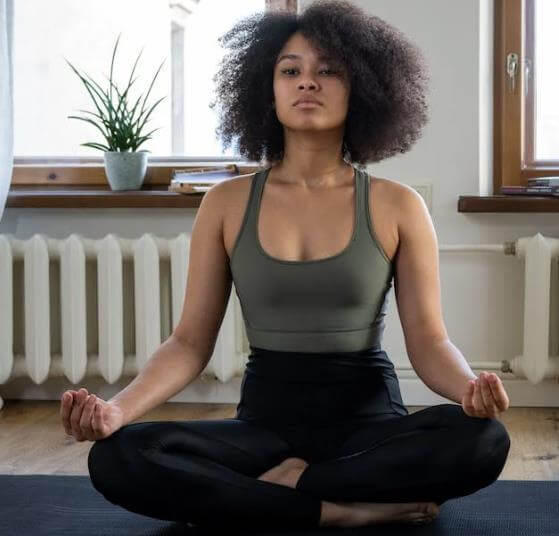
Originally, Yoga is no less than a technique used to achieve inner calmness while reducing stress and increasing rejuvenation. Fortunately today, Yoga has indeed become a mind-body therapy that’s frequently suggested to cure back pain as well as the tension that comes with it. Your body can be both relaxed and strengthened by the right stances.
You may learn more about your body by doing yoga, even for a little time each day. You will be better able to identify your tension points and imbalances as a result of consistency. Once you keep doing it and it becomes a part of you, you may align and balance yourself by using the knowledge acquired. You will discover why these positions could be helpful for treating back pain by engaging in them.
Can I reduce lower back pain with yoga?
Simply said, yoga’s motions and isometric holds can help you increase your strength and suppleness, both of which help to relieve low back discomfort. Yoga is fantastic for improving flexibility and core stability, correcting posture, and breathing, all of which are essential for a healthy back, according to Sasha Cyrelson, P.T., D.P.T., O.C.S., clinical director at Professional Physical Therapy in Sicklerville, New Jersey. Experts believe that everyday yoga practice is generally safe. Nonetheless, it’s crucial to be aware of your body signals and to quit doing anything that aggravates any discomfort.
There’s a simple rule that will help you keep things in check: Never overstretch yourself into a painful position. This is because our bodies use pain to alert us when something is wrong. So if the stretch is hurting, go easier. This implies that you should experience both muscle tension and release, but if you experience any pinching, severe discomfort, or momentary numbness, please back off on the stretch.
10 Best Yoga Asanas for Back Pain
1. Child’s Pose
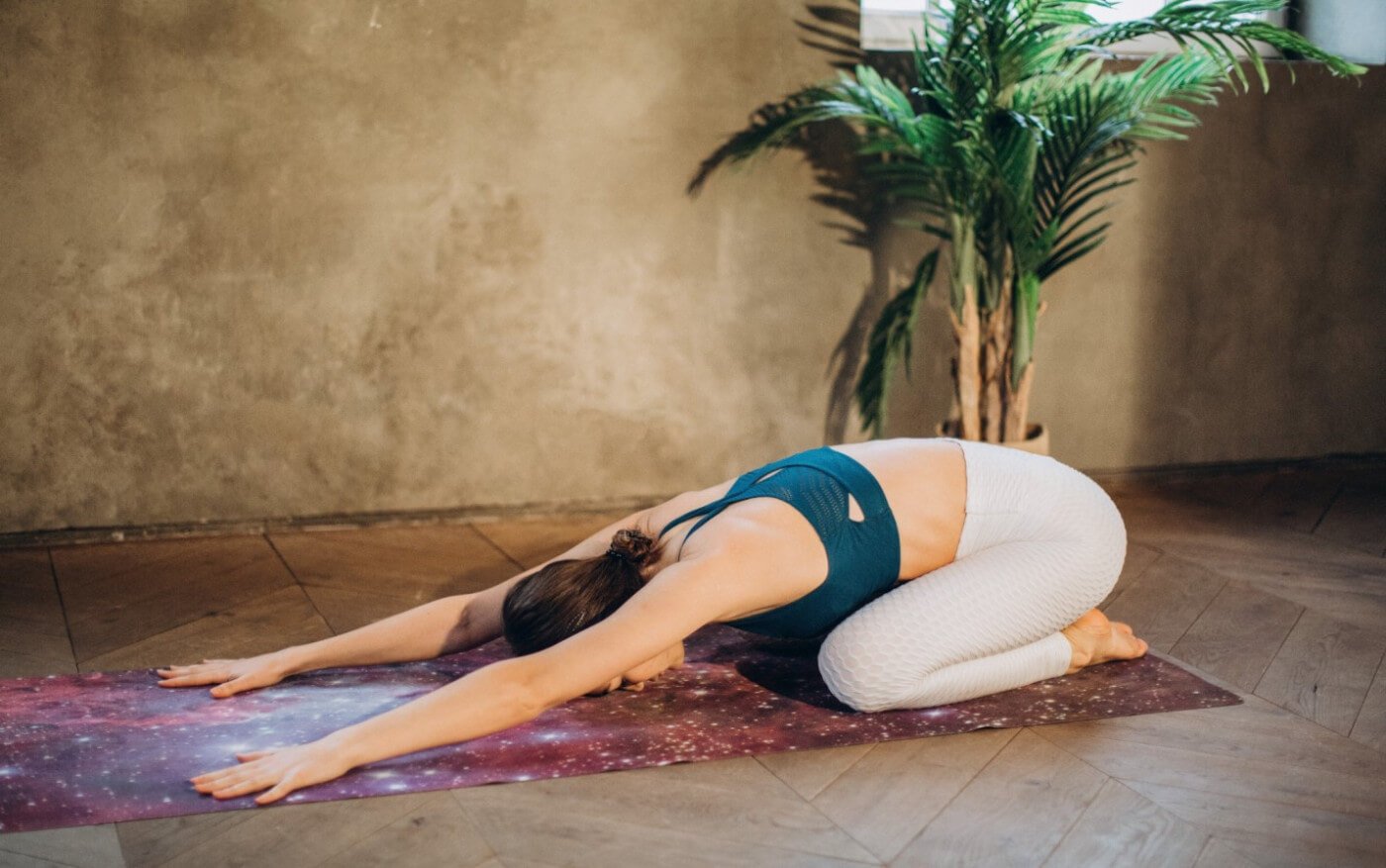
First on our list is the Child’s Pose. Child’s Pose is not only a fantastic way to unwind; it can also extend your hips and the entirety of your back. Begin by getting down on all fours, keeping your arms in front of you, and leaning back until your butt is rested a little above your heels. Maintain the position as you inhale deeply, allowing the air to fill your hips completely. Your sense of relief will increase as you move farther in either direction. Maintain the position for as long as you can handle and don’t forget to breathe properly. Breathing is essential.
2. Triangle Pose
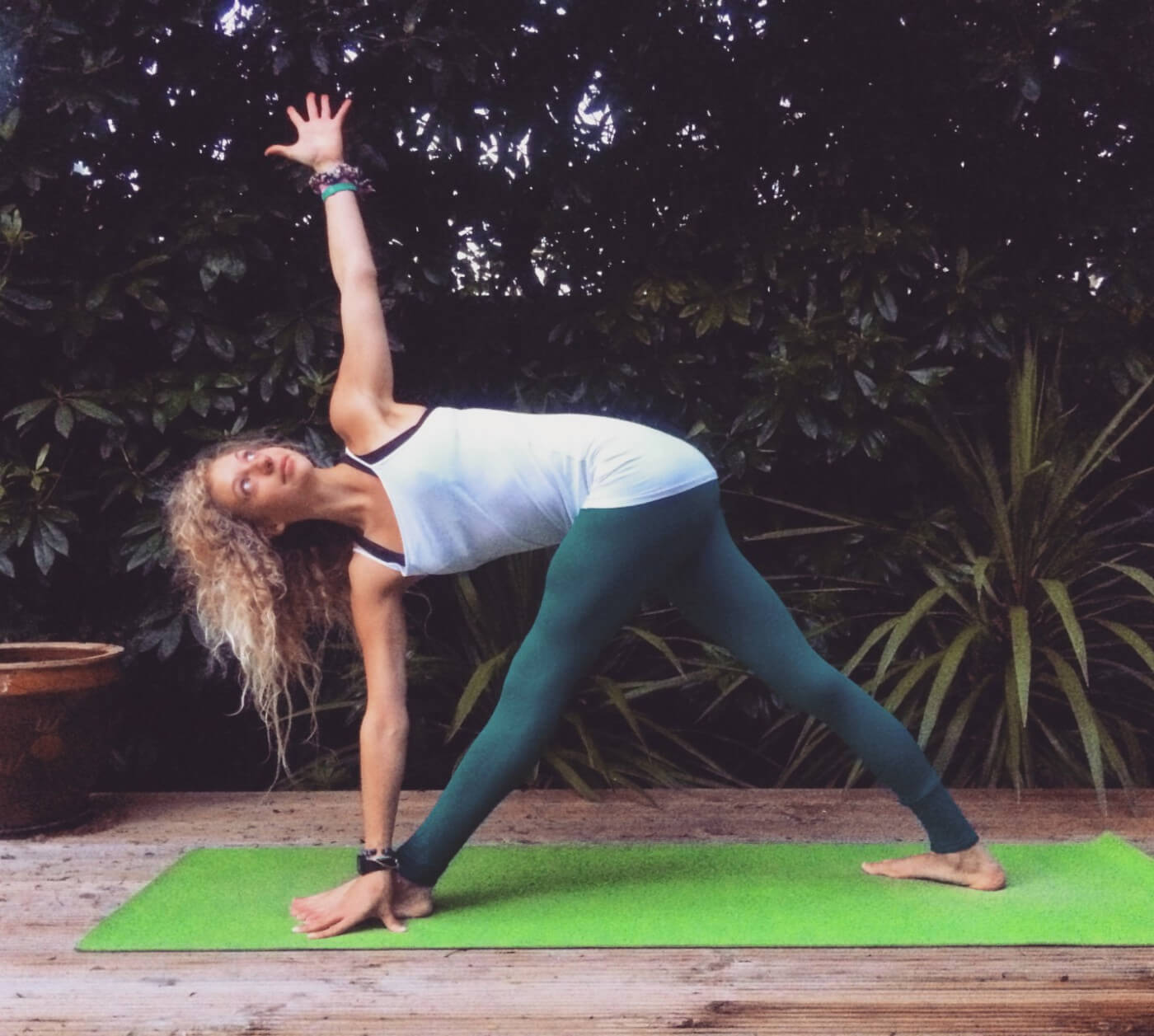
Stretching and strengthening exercises, like Triangle Pose, can reduce back discomfort and even prevent it in certain circumstances. To do this, stand with your feet parallel to one another and about three feet apart. Rotate your right foot such that the arch of the left foot is parallel to the right heel. Reach your right hand toward the ground on either side of your right foot while keeping your arms out to the side. Turn your body to the side and extend your left hand’s fingers upward. You can hold for five to seven breaths while focusing on your left hand and then exchange sides. Ensure that you’re safe a keep doing it as long as it doesn’t harm your neck.
3. Eagle Pose

The entire back may be stretched and opened with the help of this more difficult posture, which calls for strength and balance. Stretch your right thigh over your left from Mountain Pose by lifting your right leg with your knees slightly bent. If you want to balance while keeping your toes on the ground, you can stop here. If not, hook your right foot behind your left calf. For the arms, bend your elbows and bring your hands together while crossing your right arm across your left. Draw your elbows up and your hands away from your face for a strong stretch
4. Spinal Twist

Regarding postures that include twisting, you have a lot of alternatives. Spinal twist is one of the fundamental and successful ones. Maintain a straight left leg while bending your right leg such that your foot is flat. Turn so that your left elbow may hook over your right leg while supporting yourself with your right hand on the floor behind you forming the shape of a tripod. You can alternatively hold onto your right knee and turn to see over your right shoulder if this is too much for you. Alternately, you can bend both of your legs and let them fall to the side, then spin in the direction that your knees are facing.
5. Bow Pose
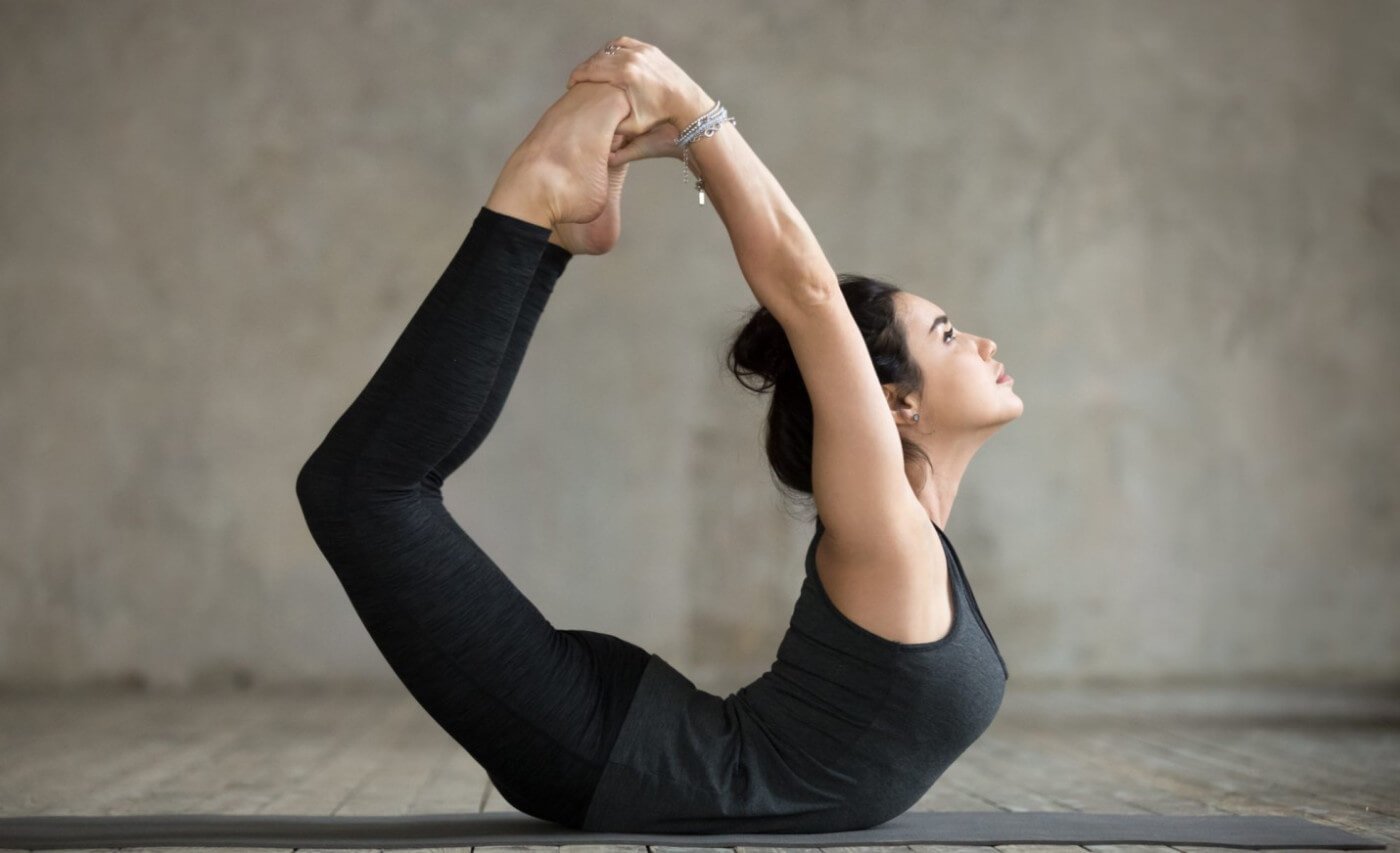
Stretch your hands toward your ankles while you are face down on the ground and take hold of each one individually. Draw your chest forward and the back of your thighs up toward the sky to slowly lift them off the floor. Although it can be a bit challenging if you have a back issue, this position, however, is a great technique to develop the back muscles.
6. Cat/Cow

Cat/Cow pose is a yoga position you want to do from time to time. Beginning on your hands and knees in tabletop posture, swap arching and rounding your back as you press both hands and tips of your feet into the ground. These positions help stretch the back as well as the torso while also massaging the spine. These positions are excellent for keeping the back limber and content.
7. Locust Pose
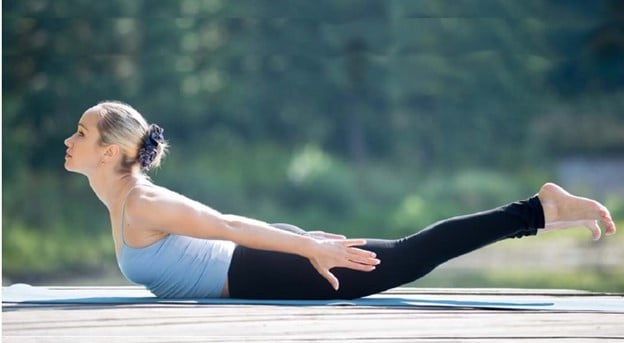
Strengthening your spine and buttocks with locust is a terrific idea. Your arms should be by your side with the palms facing up, and your forehead should rest flat on the ground. Lift your torso, arms, legs, and head off the ground gradually. You should feel your body lengthen from head to toe as you perform this, and your thighs should be slightly rotated in. Maintain this position for 30 to 60 seconds. Be calm and repeat two or three times if you feel up to it. But don’t do more than you can.
8. Seated Forward Fold
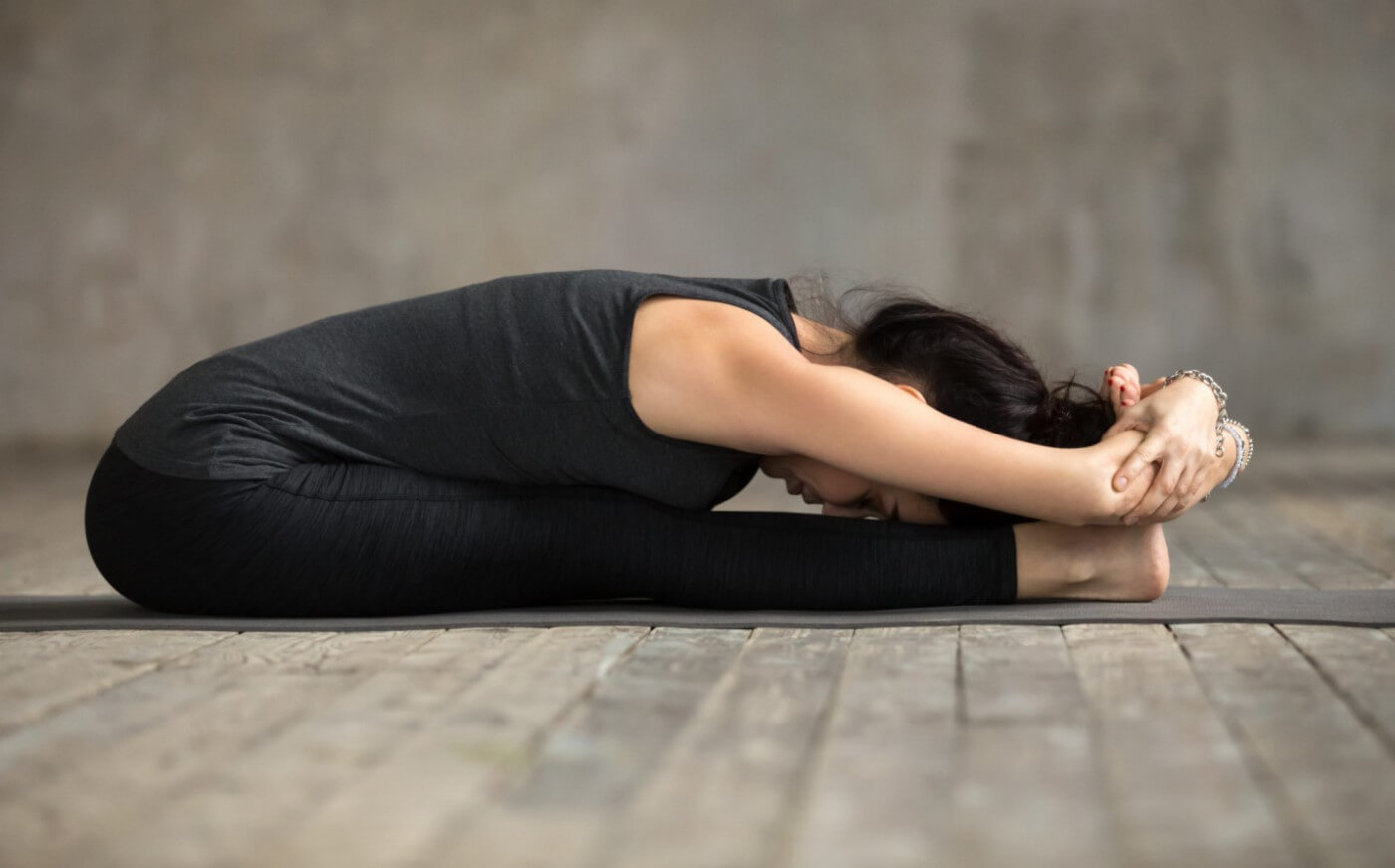
Even though it’s simple to perform a seated forward fold, doing so can help to expand the lower back and relieve pain and stiffness. Reach for your shins, ankles, or feet while seated with your legs extended forward and bending at the hips. Keep reaching your sternum forward to lengthen your torso rather than rounding your back. Bend your knees as necessary if doing this hurts your back.
9. Plow Pose
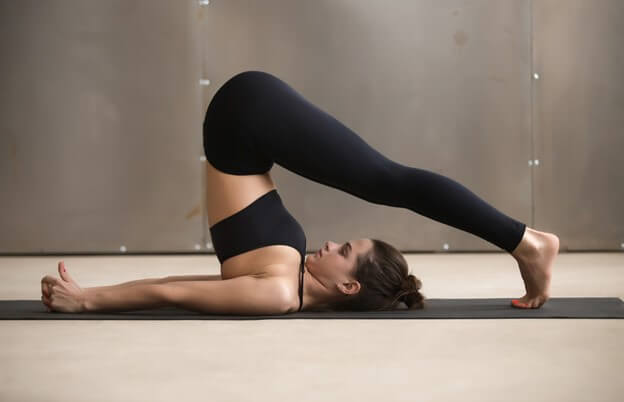
From the shoulder stand position, squat down until your toes or the tops of your feet touch the ground. You can clasp your hands together and maintain your forearms on the ground while keeping your hands against your back for support. To feel an intense stretch in your shoulders and spine, hold this position for as long as it’s comfortable. You can set a chair behind you and rest your feet on it if this seems too much.
10. Downward Dog

Among the most recognizable yoga poses is Down Dog for a good reason. Your entire body can be rejuvenated by it. Start on the tabletop and lift your hips to position your body in an upside-down V. Draw your upper thighs toward the room’s rear while relaxing your head and neck. Reaching your hips up and back can aid in opening your lower back, while separating your shoulder blades will further extend your upper back. You can take between five and seven breaths.
Is it safe to practice yoga if you have lower back pain?
Whether or not Yoga is involved, before trying anything new, it is always advisable to consult your doctor or specialist if you have any underline conditions. Dr. Cyrelson advises consulting a physical therapist before beginning any exercises if you have a history of lower back injuries, disc issues, or pain that persists for more than 72 hours without getting better. It’s best to take care of any medical issues as soon as possible to prevent them from getting worse.
Nonetheless, it may be worthwhile to attempt some yoga stretches to address any stiffness and alignment issues if your lower back pain is more of a general achiness or discomfort. Stretches like child’s pose and downward dog are especially beneficial since they relieve tension throughout all of your back muscles, not just in the lower back—so they can be used to treat any tight places.
Is Yoga truly effective for Back Pain?
During the course of a year, one short study from 2017 compared the outcomes of physical therapy and yoga practice. The subjects all had persistent back pain, and both their pain and activity limitations were improved. After three months, the likelihood of using painkillers decreased for both groups.
In another different study from 2017, it was discovered that yoga practitioners experienced brief, slight to moderate reductions in pain severity. Also, it was discovered that Yoga practice slightly improved participants’ both long-term and short-term functions.
Although more research is required to verify and build upon these findings, Yoga is actually safe and beneficial.
Conclusion
Prevention is the key to a long and distress-free life when it comes to back pain, but it’s also crucial to pay attention to your body. Avoid adopting any postures that can be harmfully forced. If your pain is severe, you might want to consult a doctor.
Despite the fact that new studies support the use of yoga as a back pain treatment, it might not be suitable for everyone. Always consult your doctor before beginning a new Yoga or workout regimen. They can assist in risk identification and progress monitoring.
Starting a practice at home only requires 10 minutes each day. To direct your practice, you can use books, articles, and online classes. Once you master the fundamentals, you may nimbly design your own sessions. Take classes at a studio if you like more practical instruction. Make sure you’re careful to look for courses and instructors who can meet your individual needs.

 By myulikeadmin
By myulikeadmin



